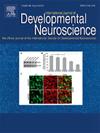Clinical, Genetic and Molecular Divergences Between Full Mutation and Premutation in Fragile X Syndrome: A Systematic Review
Abstract
Background
Fragile X syndrome (FXS) is the most prevalent inherited form of intellectual disability (ID) and the primary monogenic cause of autism spectrum disorder (ASD) worldwide. The disorder arises from a CGG trinucleotide expansion of more than 200 repeats, known as a full mutation (FM) that occurs in the fragile X messenger ribonucleoprotein 1 (FMR1) gene locus at Xq27.3. This expansion induces hypermethylation of the gene's promoter region, leading to epigenetic silencing and a consequent reduction in the expression of the FMR1 (FMRP)—a protein critical for synaptic plasticity and maturation. While the genetic basis of FXS is well established, further clarification is needed to understand how variations in the FMR1 gene lead to divergent clinical outcomes. This systematic review explores the differences in clinical features, genetic variations and molecular mechanisms between individuals with a FM, clinically diagnosed with FXS and premutation (PM) carriers with fragile X premutation–associated conditions (FXPAC), with a focus on implications for improving support for individuals with ID and their families.
Methods
Three databases (PubMed, Web of Science and Scopus) were systematically searched, guided by a variety of keywords, to identify qualitative, empirical research about clinical, genetic and molecular differences between FM and PM carriers. A total of 62 articles were examined, and 44 were included in the review.
Results
The information is presented in the following categories: clinical features, genetic variations, molecular mechanisms, diagnostics and treatments. Three primary themes are discussed: (1) variability in clinical manifestations, (2) genetic insights and diagnostic advancements and (3) current and emerging management strategies. Research gaps are also highlighted along with perspectives and implications for further research.
Conclusion
The identification and treatment of FXS and FXPAC remains a major public health and clinical concern. This systematic literature review provides a more robust understanding of FXS and the clinical, genetic and molecular distinctions between FM and PM carriers. Despite growing knowledge of the condition, significant efforts are still required to refine diagnostic tools, develop targeted interventions and support individuals and families affected by FXS.


 求助内容:
求助内容: 应助结果提醒方式:
应助结果提醒方式:


